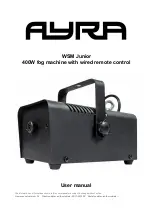
Preparing the Fabric
139
4
— — — — — — — — — — — — — — — — — — — — — — — — — — — — — — — — — — — — — — — — — — — — — — — — — — — —
Setting the fabric in the
embroidery frame
The fabric is stretched in the embroidery frame. If the
fabric is loose, the quality of the embroidery pattern
may be poor. Put the fabric in the frame without slack
following the steps below. Have a fabric with a
stabilizer material attached and the embroidery frame
(medium, small or large) ready.
■
Embroidery frame (medium)
Patterns with a height of up to 10 cm (4 inches)
and a width of up to 10 cm (4 inches) can be
sewn.
■
Embroidery frame (small) [optional]
Patterns with a height of up to 2 cm (1 inch) and a
width of up to 6 cm (2-1/2 inches) can be sewn.
This is used for letters and other small embroidery.
Memo
z
There are patterns for which embroidery
frame (small) cannot be used.
■
Embroidery frame (Multi position) (Large)
[optional]
Embroidery can be done in an area with a height
of up to 17 cm (6-7/10 inch) and a width of up to
10 cm (4 inch) . This is used to embroider multiple
patterns without changing the fabric position in
the frame.
CAUTION
a
Loosen the embroidery frame adjustment
screw and remove the inner and outer frames,
placing the outer frame on a flat surface.
Separate the inner and outer frame by removing
inner frame upward.
a
Inner frame
b
Outer frame
c
Adjustment screw
b
Place the fabric with the stabilizer material on
top of the outer frame.
Have the right side of the cloth up.
a
Right side
c
Press the inner frame in from the top of the
fabric.
Line up
on the inner frame and
on
outer frame.
d
Tighten the adjustment screw by hand just
enough to secure the fabric.
●
Use the embroidery frame that matches
the size of the pattern being embroidered.
Otherwise, the embroidery frame may be
hit by the presser foot and cause injury or
needle breakage.
a
b
c
1
Summary of Contents for Sofia BL137A2
Page 1: ......
Page 70: ...SEWING BASICS 68 ...
Page 188: ...English 885 V99 XE7973 001 Printed in China ...
















































